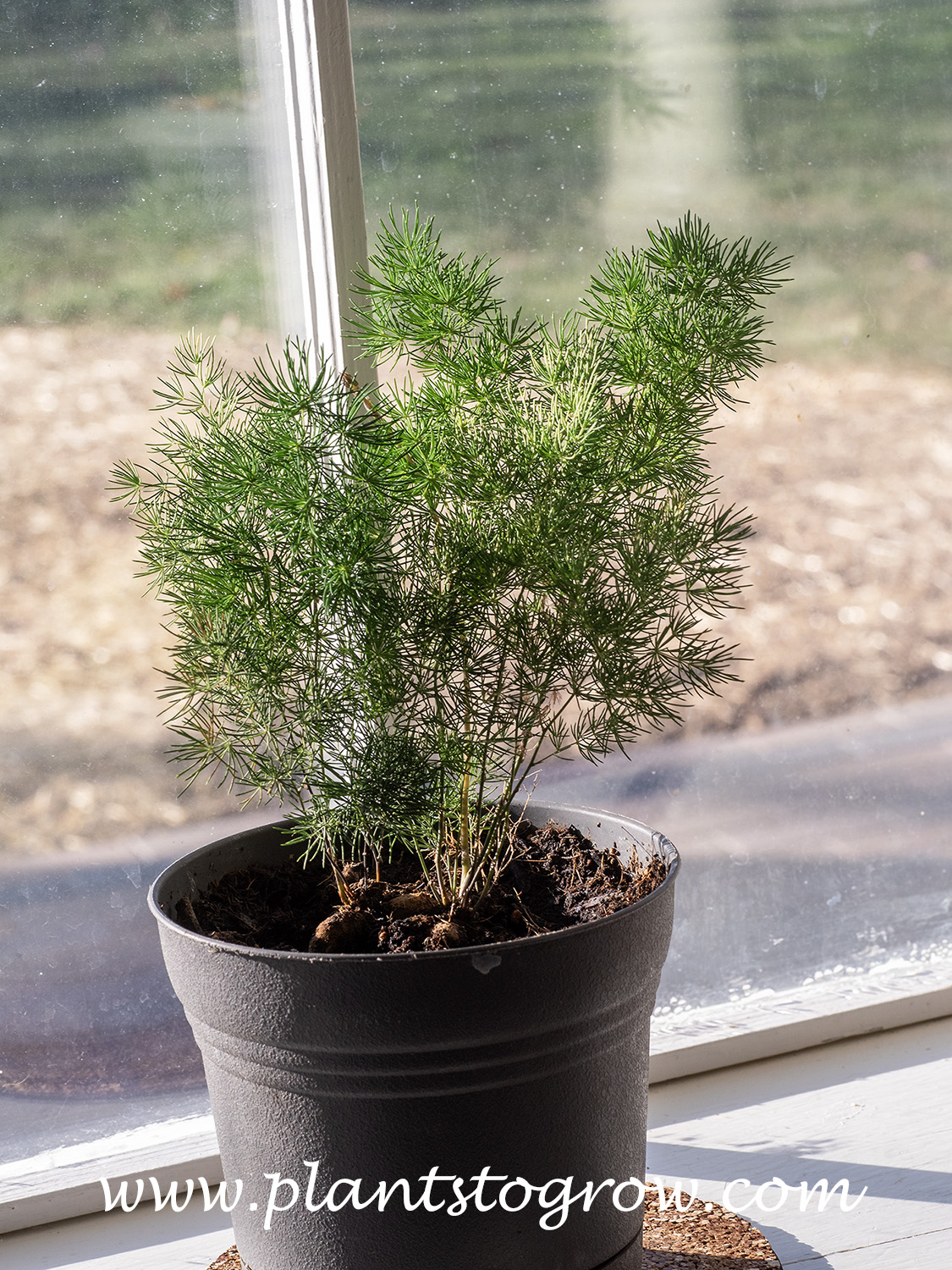| Description | Ming Fern (Asparagus densiflorus myriocladus) is a compact asparagus fern with feathery evergreen foliage. It can be used as an outdoor plant in warmer climates or as a house plant. |
|---|---|
| Pronunciation | (ass-SPAR-uh-gus)(den-sif-FLOR-us) |
| Plant Type | Indoor Foliage, Perennial Tender, Site author's observations, Subtropical woody plants, Tender perennials often grown as annuals |
| Hardiness Zone | 9-12 |
| Sunlight | full, bright or indirect sunlight, probably best in bright or morning sun |
| Moisture | average, approach dryness |
| Soil & Site | average, avoid wet or very dry |
| Growing Media | average house |
| Temperature | Will tolerate temperatures into the mid-40s F. |
| Flowers | The flowers are small, white, waxy, fragrant, and have bright yellow/orange anthers. |
| Fruit | The fruit starts green and ripens to red. The black seeds are small to medium in size. |
| Leaves | The leaf-like structures are cladodes. These short, flattened stems resemble leaves and perform similar functions. The needle-like cladodes grow in clusters from the nodes along the stem. The true leaves are small scales located near the base of the cladodes and are hard to see. |
| Stems | Upright shrubby form. |
| Dimensions | It is reported to reach 3-5 feet if grown in warm tropical climates, but it is much smaller when grown as a house plant. |
| Propagation | The most common way is to grow from seed. The seeds are hard and black. I have germinated the seeds by directly seeding them and also soaking them overnight. Soaking seems to work best. They can also be scarified by nicking. It is slower to germinate than other Asparagus Ferns. |
| Native Site | Native to coastal dunes, rocky outcrops, or woodlands from the southeastern Cape in South Africa north to southern Mozambique' |
| Misc Facts | Myriocladus means myrio, meaning many, and cladus refers to having many branches with needle-like structures. |
| Notes & Reference | #274-Site Authors' observations and growing experiences |

Cart



